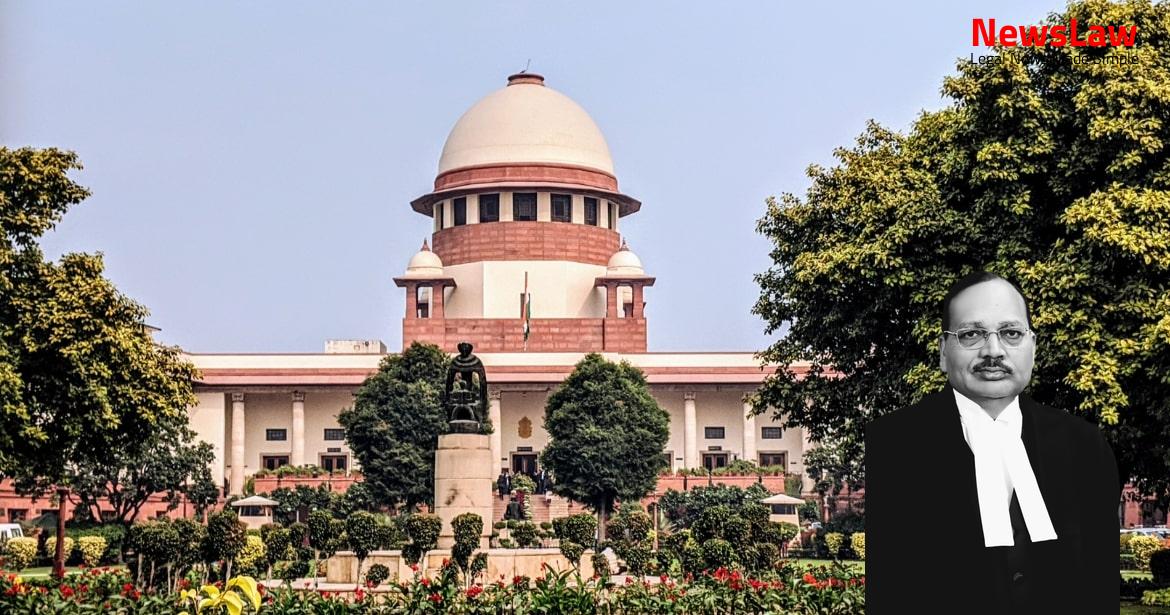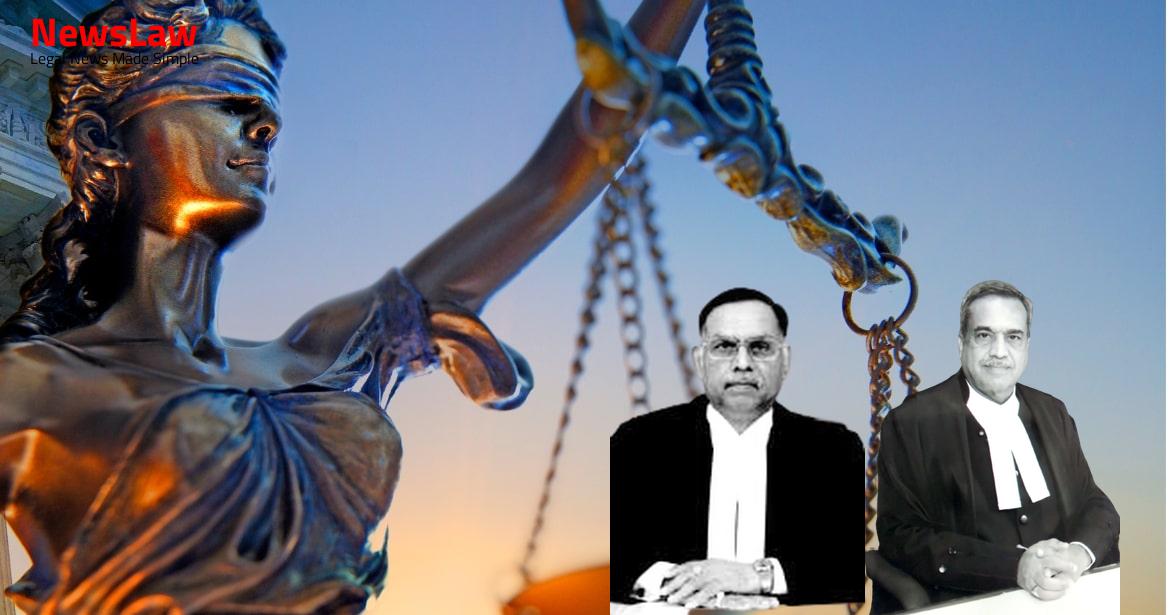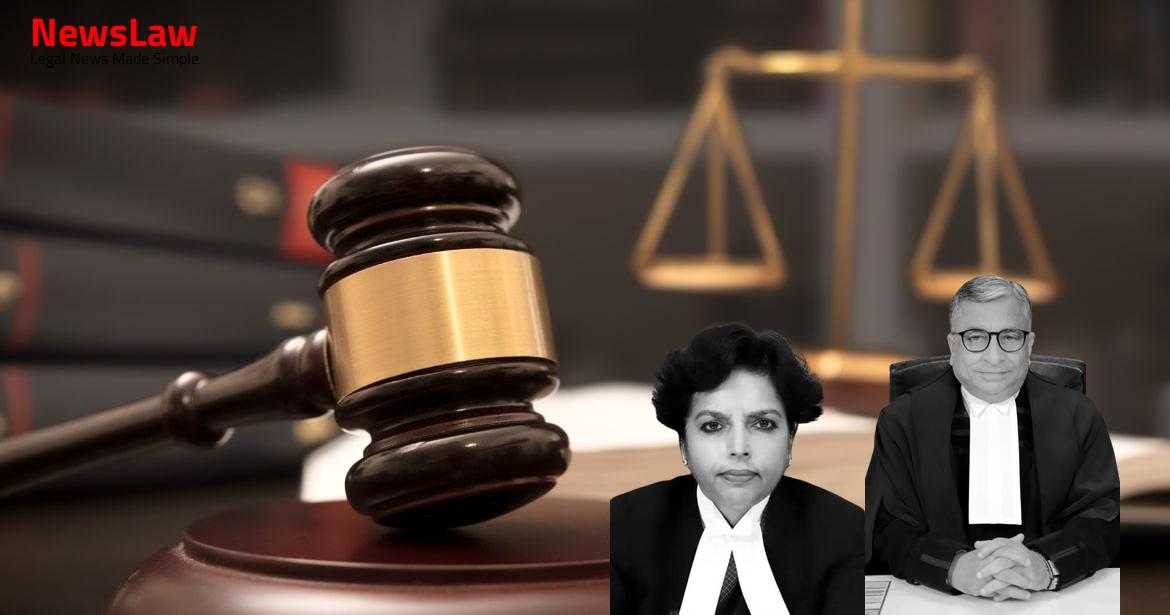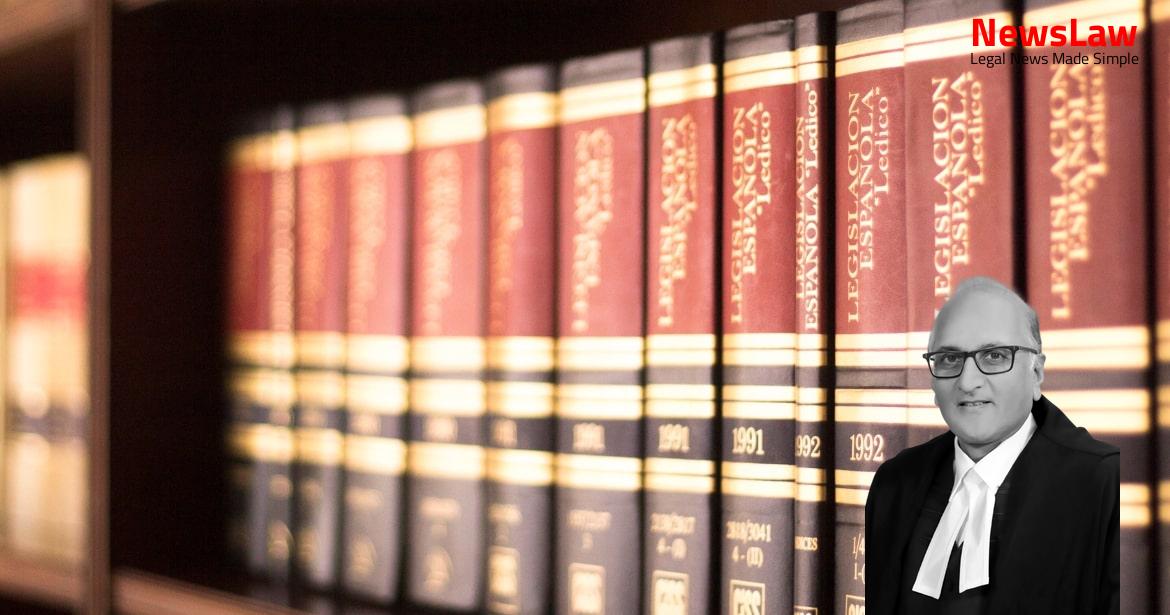The court’s detailed legal analysis of sentencing considerations in criminal cases highlights the delicate balance between aggravating and mitigating factors. The case underscores the importance of proportionality in determining appropriate punishment and maintaining public trust in the legal system. Dive into this insightful analysis to understand the nuanced approach courts take in sentencing offenders.
Facts
- Appellant responds to accused no.11 about his relative Vithobanana.
- Respondent nos.1 to 4 file a revision application before the High Court.
- Accused no.11 insults Vithobanana as a beggar and injures him severely.
- Exchange of words between the appellant and respondent no.1; respondent no.7 arrives and tries to pacify the situation.
- Accused no.11 verbally abuses PW-8 and gets physical, slapping the appellant.
- Appellant comes to accused no.11’s shop after tractor repair; altercation occurs later in the evening.
- Respondent nos.1 to 4 arrive, abuse the appellant and PW-8, physically attacking them with a stick and a scythe.
- The incident ends with the dispersal of those involved.
- Arjun Dada Hon (PW-8) intervenes and is also assaulted by the same respondents.
- Accused no.11 objects to the appellant being with Vithobanana.
- Minor injuries are reported for Sachin (PW-9) and Madhukar (PW-4).
- Appellant is called by accused no.11 near his pan shop on 26 March 1992 at 6:30 pm.
- Respondents convicted for offences under Sections 326, 324, and 447 of IPC.
- Sentenced to rigorous imprisonment for one year and a fine in Section 324 with Section 34 case.
- Directed to pay compensation to victims according to Section 357-A of CrPC.
Also Read: Supreme Court Judgment on Single Till Mechanism for HRAB Calculation: A Comprehensive Analysis
Arguments
- Trial Court believed the testimony of the appellant and another injured witness.
- Medical evidence and recovery of weapons supported the testimony.
- Appellant suffered 11 injuries including a depressed fracture.
- Doctor deposed that the appellant’s condition was serious when brought for treatment.
- The respondent submits that the prayer for enhancement made by the appellant cannot be considered.
Analysis
- The Trial Court and the Appellate Court have concurrently found the offences under Section 326 read with Section 34 and Section 324 read with Section 34 of IPC established by the prosecution.
- Medical evidence attests to the seriousness of the appellant’s condition when admitted as an indoor patient.
- The High Court, while exercising its revisional jurisdiction, agreed with the concurrent findings of the lower courts without detailed reasoning.
- Mitigating circumstances in favor of the respondents were not specifically addressed by the High Court when imposing sentences.
- The gravity of the crime is the primary consideration for determining appropriate punishment.
- Balance between aggravating and mitigating circumstances is crucial in sentencing.
- Reducing sentences too leniently could undermine public trust in the legal system.
- Despite attempts at settlement, no amicable resolution was reached between parties.
- The High Court opted for a lenient view by reducing substantive sentences for the mentioned offences.
- Judicial discretion in sentencing considers the seriousness of the crime, circumstances, and the accused’s background.
- The principle of proportionality guides sentencing decisions.
- Detailed medical evidence of injuries played a significant role in the case.
- Remanding the revision application to the High Court for further consideration is suggested based on the X-ray evidence presented.
- The court proposed to enhance the sentence of respondent nos. 1, 2, and 4 by six months’ simple imprisonment due to the gravity of the offence.
- A reasonable compensation was proposed to be granted to the victims in addition to the compensation made payable by the High Court.
- Respondent nos. 1, 2, and 4 were directed to pay an additional sum of Rs.40,000/- to the present appellant and the injured witness.
- In addition to the substantive sentence imposed by the High Court, respondent nos. 1, 2, and 4 were to undergo six months of simple imprisonment.
- They were ordered to surrender before the Trial Court within six weeks to undergo the additional sentence.
- A total sum of Rs.40,000/- was to be deposited by respondent nos. 1, 2, and 4 with the Trial Court within one month.
- The maximum sentence for the offence they were charged with is imprisonment for life, but the court took into account the serious injuries sustained by the appellant.
- There were no major mitigating circumstances in favor of respondent nos. 1, 2, and 4, as there was no provocation for their assault on the appellant and other victims.
Also Read: Selection and Appointment of Judicial Officers in Himachal Pradesh
Decision
- The officer in charge of Kopargaon Police Station must ensure the equal distribution of additional compensation to the appellant and Arjun Dada Hon (PW-8).
- The appeal is partly allowed with no order as to costs.
Case Title: SAHEBRAO ARJUN HON Vs. RAOSAHEB (2022 INSC 929)
Case Number: Crl.A. No.-001499-001499 / 2022



